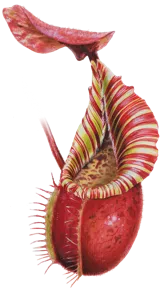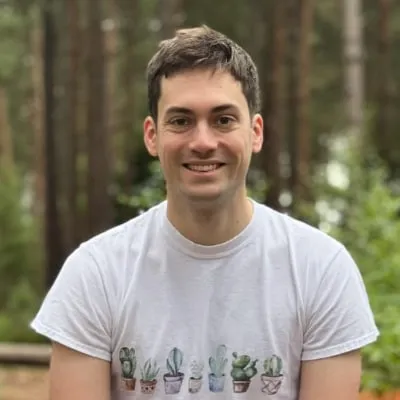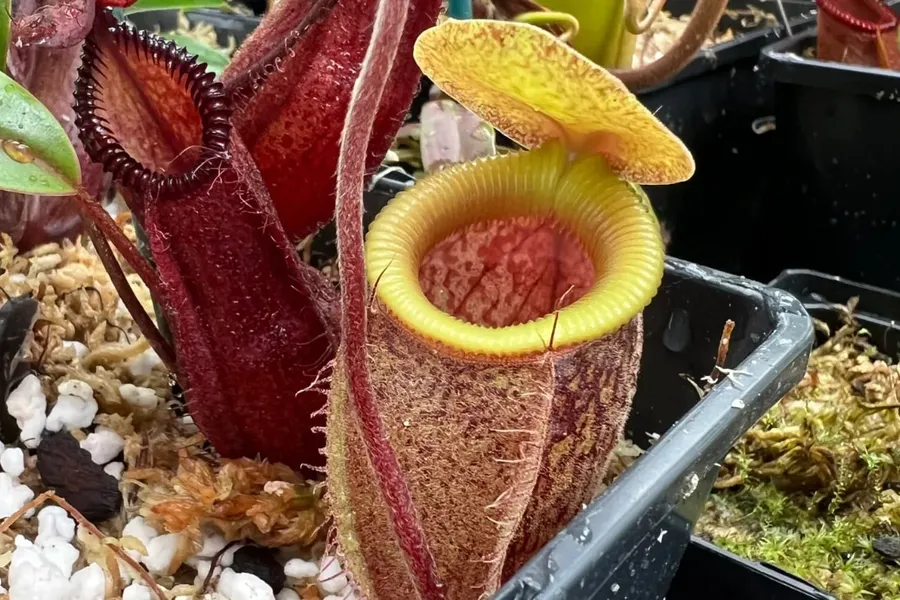It’s been almost 4 years since the first version of the Nepenthes Species Identifier launched. Regular visitors may have noticed that the tool’s now been offline for many months. This is because Eric Huang - creator of the underlying AI model which does the identification - and myself have been hard at work building a vastly improved version 2, which I’m pleased to report is now ready for general use!
If you want to get started right away, you can hit the button below to be taken directly to the Nepenthes Species Identifier. But if you’re interested in learning more, scroll down to read the story of how the AI was built and trained, instructions for how to use it, and some fun examples of its new abilities.
Improvements in Version 2
If you were familiar with the original version of this tool, you may remember having to draw a selection box around the pitcher in your photo. This is because the old model could only handle a single pitcher per image.
Version 2 has no such limitation. Compared to the original, it’s been improved in many different ways:
- You no longer have to crop individual pitchers - the model detects all the pitchers in your photo and highlights them.
- The model can identify multiple species in a single photo - click on each detected pitcher to see the AI’s predictions. Remember that it doesn’t do so well with hybrids, but can often guess the parents with reasonable accuracy.
- Broader understanding of taxonomy - this includes species which the old model couldn’t recognise, like N. undulatifolia, N. tenuis, N. singalana, and more.
- It’s much smarter and more accurate - based on testing in my greenhouse, it’s got a higher success rate than the old model.
- Better user interface - I’ve worked to ensure the tool functions on as many different devices as possible, including touch-based iOS and Android handsets, so you can test it out in your grow tent or greenhouse! It will also tell you your position in the queue, at times when the model is experiencing high demand.
Here’s an example of it in action:
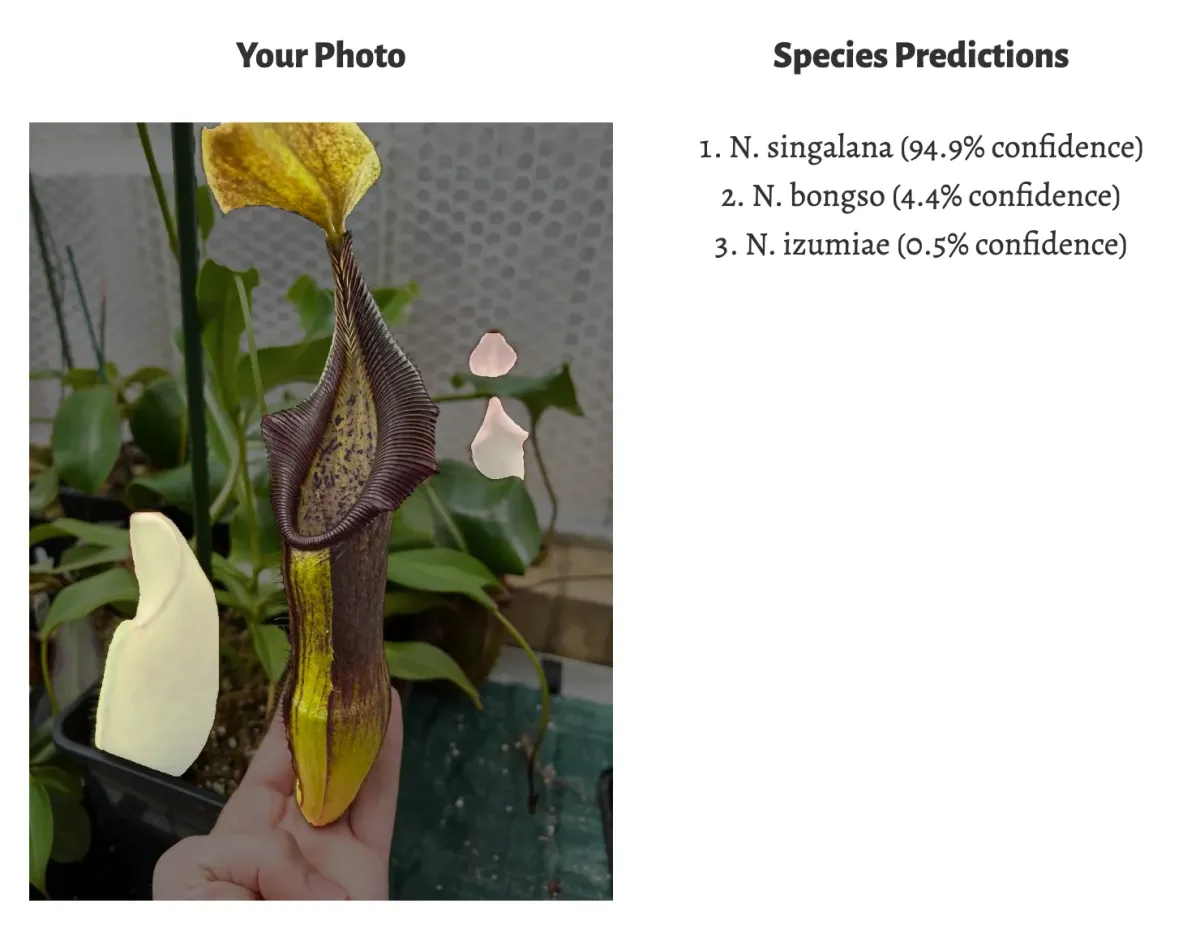
As you can see, it’s correctly identified my N. singalana with a high degree of confidence. I often find the model’s secondary guesses to be very interesting, since they’re frequently species that occur sympatrically with the correct species (in this case, they all hail from Sumatra).
But hang on, what’s this?! It’s detected a partially inflated pitcher in the background…
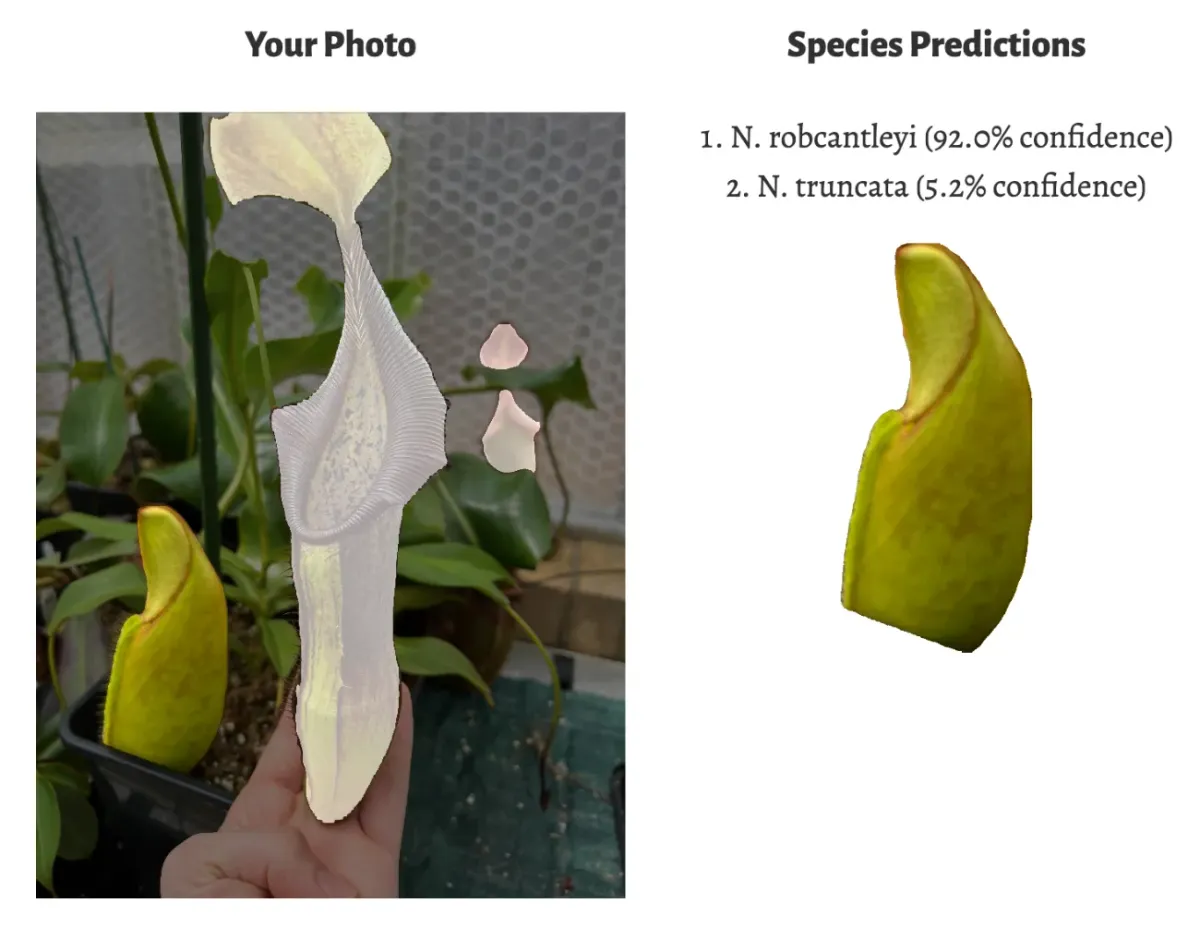
…and correctly identified it as N. robcantleyi, with over 90% confidence! And its next best guess is N. truncata, which is amusing in itself. Remember that it hasn’t used the leaves as a clue here - it’s deduced the species entirely from the morphology of the developing pitcher. I find this remarkable.
What’s more, if you give it a photo of a hybrid, it will often guess one or both of the parents based on the traits passed to its offspring. Here it is making a solid attempt at identifying one of my N. lowii x truncata. And yes, it guessed the N. edwardsiana next to it correctly too.
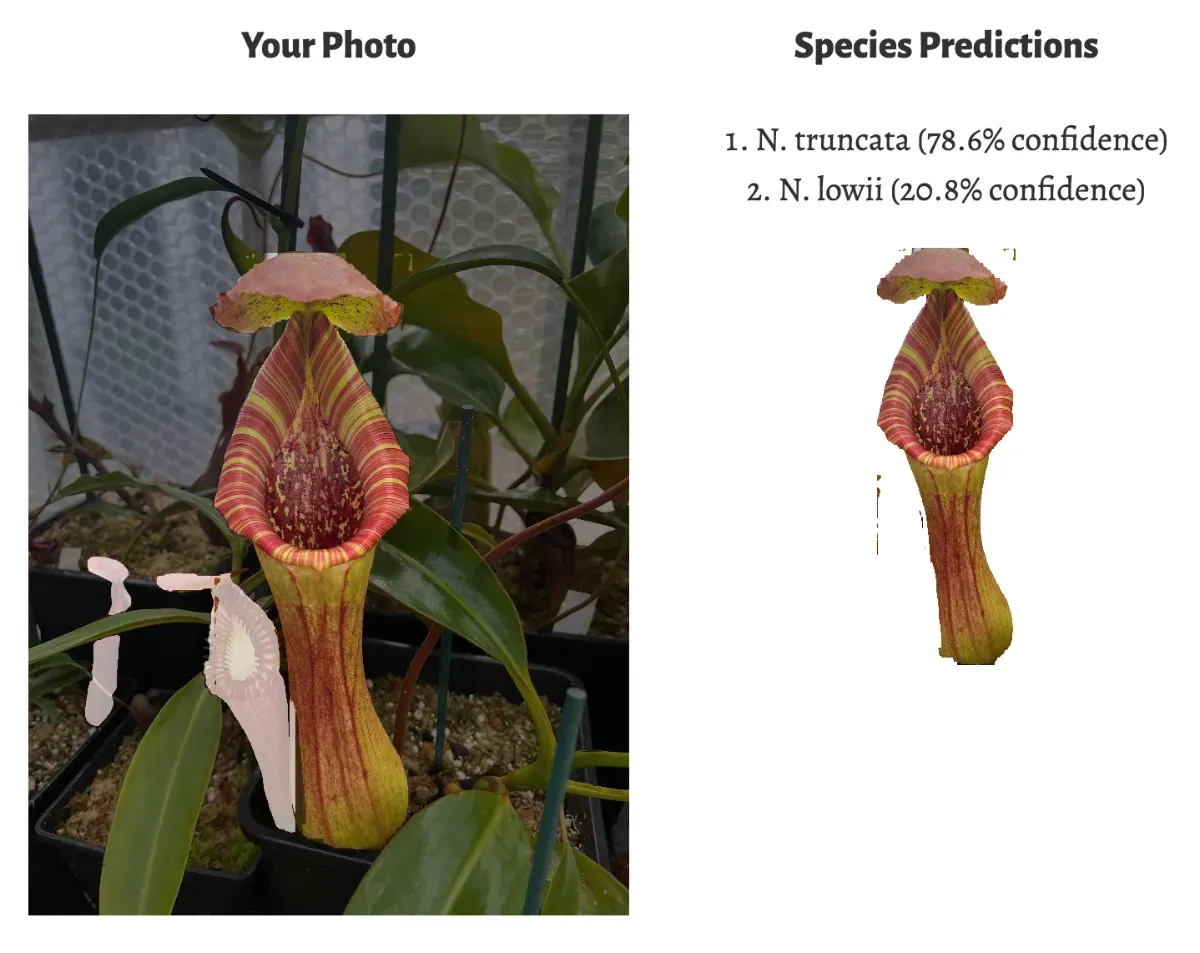
Technical information
In the years since this tool launched back in 2020, AI seems to have shot to the forefront of public consciousness. This is largely thanks to LLM-powered chatbots like ChatGPT, and the subsequent boom in generative AI products. I’m still not sure what to make of the text-to-image and text-to-video tools which have emerged in the years since, and personally feel that advances in analysis and classification of images hold far more positive potential for society.
Anyway - I can’t take any credit for the incredible underlying model which powers the Nepenthes Species Identifier. This was built entirely by engineer Eric Huang, and if you’re interested in learning more about the cutting edge tools and techniques he utilized, you can do so by looking at the following papers:
- Classifier: https://arxiv.org/abs/2111.09883
- Segmentation: https://arxiv.org/abs/1912.08193
- Labeling: https://arxiv.org/abs/2304.02643
One point to note is that the image classifier uses a shifted window transformer, which is based on the same tech that powers ChatGPT. If you’re so inclined, you can review the code for the backend on GitHub here.
What’s next?
Let us know what you’d like to see!
As I mentioned in the original blog post, identifying hybrids would be very difficult but is not necessarily impossible. If you have any other ideas for what would be useful or exciting, please leave a comment below or get in touch via email.
Thanks for reading! Enjoy the tool.
